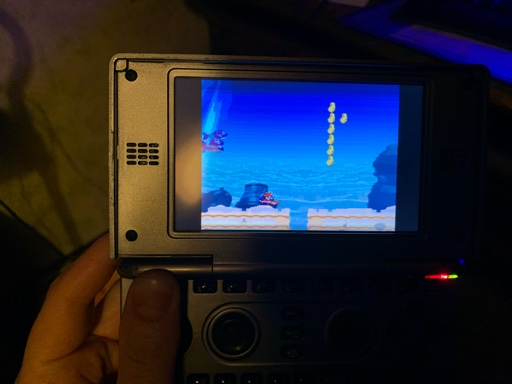Grench
Forum Addict!
- Joined
- Oct 3, 2008
- Messages
- 6,629
Audacious works fantastic. Playing Yoko Kano's Tank from Cowboy Beebop right now with the lid 3/4 closed on the desk in front of me. Speakers are 'bright' and lacking bass, but what do you want from a pair of speakers the size of dimes? Assuming no hardware acceleration at this stage, MP3 playback. Stereo 44100 Hz Bitrate 276 kb/s, ~22% CPU usage (both cores) according to Gkrellm (may not be accurate). Sounds a lot better than cell phone speakers. Have to make sure you turn the volume way down to start with - Pyra has way more power than her speakers can handle cleanly.
Switching to a cheap set of earbuds.
Good - so much power that the earbuds will clip. Plugging in earbuds switched output from speakers to headset.
Bad - music cuts out for about a tenth of a second every 6-10 seconds or so. At first I thought I must have a short in the connection - nope.
Weird - music playback doesn't cut out when I have the headphones out and playback through the speakers, only does that through the earbuds. No audio skip or cutout through speakers.
I would try a bluetooth headset, but I don't know which programs to install for that.
Makes me think - at some point we will want a 'Pyra Optimization Package' to install after or during the Debian install with all of the video and audio acceleration trickery included. It may as well include the right bluetooth drivers with that?
Continuous light show. Okay, the red flashing sets of two heartbeat from the lid LEDs is getting annoying. How do I turn that off or make the lid lights follow the left/right of power button status lights so they mean something?
Keep in mind the above is commentary on software support that is expected to be hit and miss at this stage. The important part to take away is that the hardware itself is checking out as -working-!
Switching to a cheap set of earbuds.
Good - so much power that the earbuds will clip. Plugging in earbuds switched output from speakers to headset.
Bad - music cuts out for about a tenth of a second every 6-10 seconds or so. At first I thought I must have a short in the connection - nope.
Weird - music playback doesn't cut out when I have the headphones out and playback through the speakers, only does that through the earbuds. No audio skip or cutout through speakers.
I would try a bluetooth headset, but I don't know which programs to install for that.
Makes me think - at some point we will want a 'Pyra Optimization Package' to install after or during the Debian install with all of the video and audio acceleration trickery included. It may as well include the right bluetooth drivers with that?
Continuous light show. Okay, the red flashing sets of two heartbeat from the lid LEDs is getting annoying. How do I turn that off or make the lid lights follow the left/right of power button status lights so they mean something?
Keep in mind the above is commentary on software support that is expected to be hit and miss at this stage. The important part to take away is that the hardware itself is checking out as -working-!



